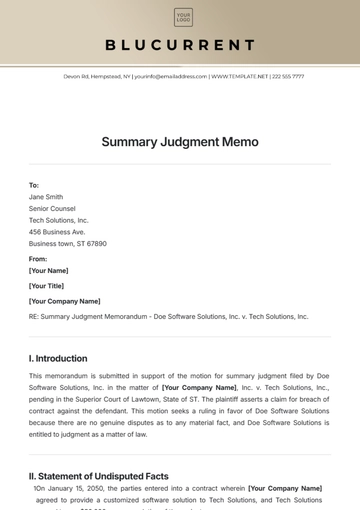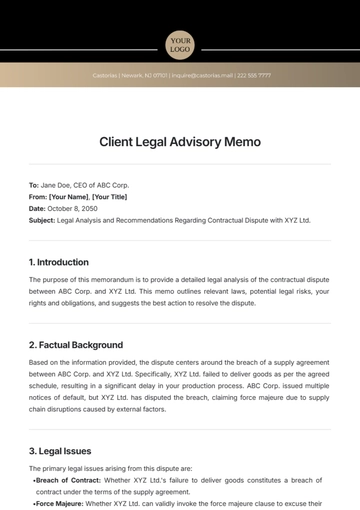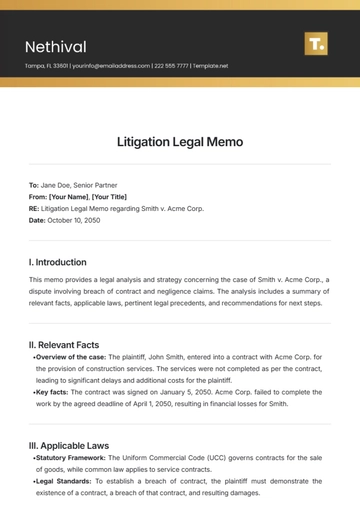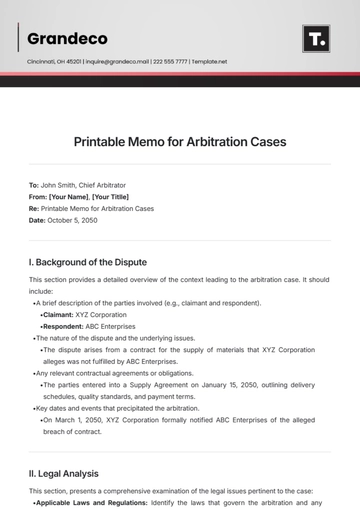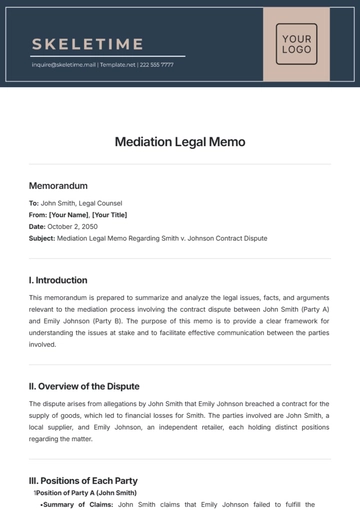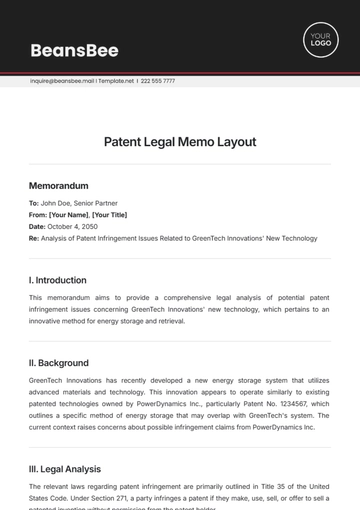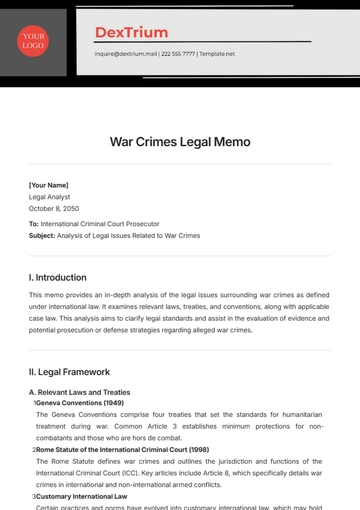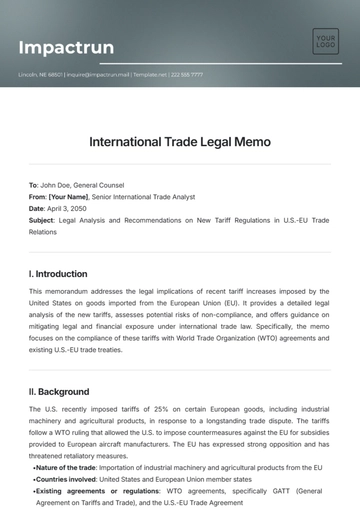Free IP Design Legal Memo

Memorandum
To: Jane Doe, Head of the Design Department
From: [Your Name], [Your Title]
Date: September 5, 2050
Subject: Analysis of Legal Issues Related to Intellectual Property (IP) Design
I. Introduction
This memorandum provides an analysis of the legal issues associated with intellectual property (IP) design, specifically focusing on patents, copyrights, trademarks, and trade secrets. The purpose is to outline the legal framework governing IP rights, assess potential risks or infringements, and offer recommendations for protecting and managing these rights throughout the design process.
II. Legal Framework
A. Patents
Definition: A patent grants the inventor exclusive rights to their invention, typically for 20 years.
Requirements: To qualify for a patent, the invention must be novel, non-obvious, and useful.
Risks: Potential infringement on existing patents can result in legal disputes.
B. Copyrights
Definition: Copyright protects original works of authorship, including designs, artistic works, and certain aspects of functional designs.
Duration: Copyright protection lasts for the life of the author plus 70 years.
Risks: Unauthorized use of copyrighted designs can lead to infringement claims.
C. Trademarks
Definition: Trademarks protect symbols, names, and slogans used to identify goods or services.
Registration: Trademarks can be registered for enhanced protection, although common law rights can exist without registration.
Risks: Infringement of trademark rights can harm brand reputation and lead to legal action.
D. Trade Secrets
Definition: Trade secrets encompass confidential business information that provides a competitive advantage.
Protection: Protection relies on maintaining secrecy and implementing reasonable measures to safeguard the information.
Risks: Disclosure or misappropriation can lead to loss of competitive advantage and legal consequences.
III. Relevant Case Law and Statutes
Case Law: Analyze pertinent cases, such as eBay Inc. v. MercExchange, L.L.C., which addresses patent infringement and remedies, highlighting the importance of patent enforcement.
Statutes: Discuss relevant statutes, such as the Patent Act, Copyright Act, and Lanham Act, which govern IP protections and rights.
IV. Risk Assessment
Identify potential risks associated with the design process, including:
Infringement of third-party IP rights.
Unintentional disclosure of trade secrets.
Challenges in enforcing IP rights.
V. Recommendations
Conduct Thorough IP Audits: Regularly assess existing IP assets to ensure adequate protection and identify potential vulnerabilities.
Implement IP Training Programs: Educate employees on the importance of IP rights and the procedures for safeguarding proprietary information.
Use Non-Disclosure Agreements (NDAs): Require NDAs when collaborating with external parties to protect sensitive information.
Monitor Competitor Activities: Keep an eye on competitors to identify potential infringement and take proactive measures.
VI. Conclusion
In conclusion, understanding and managing the legal issues related to IP design is essential for protecting innovative creations. By adhering to the outlined recommendations, [Your Company Name] can mitigate risks and strengthen its position in the market.
Attachments: Case Law Summaries, IP Risk Assessment Checklist
- 100% Customizable, free editor
- Access 1 Million+ Templates, photo’s & graphics
- Download or share as a template
- Click and replace photos, graphics, text, backgrounds
- Resize, crop, AI write & more
- Access advanced editor






